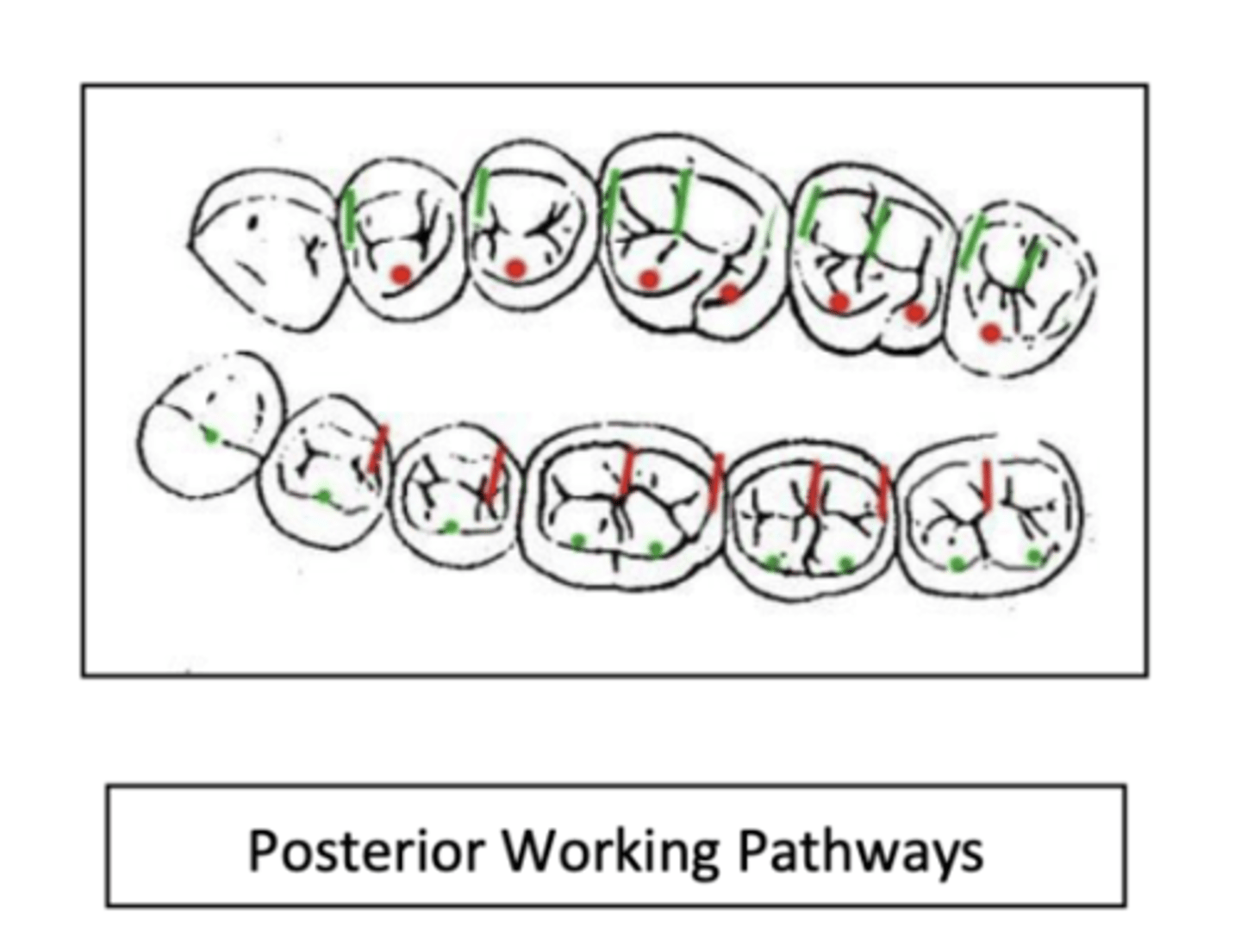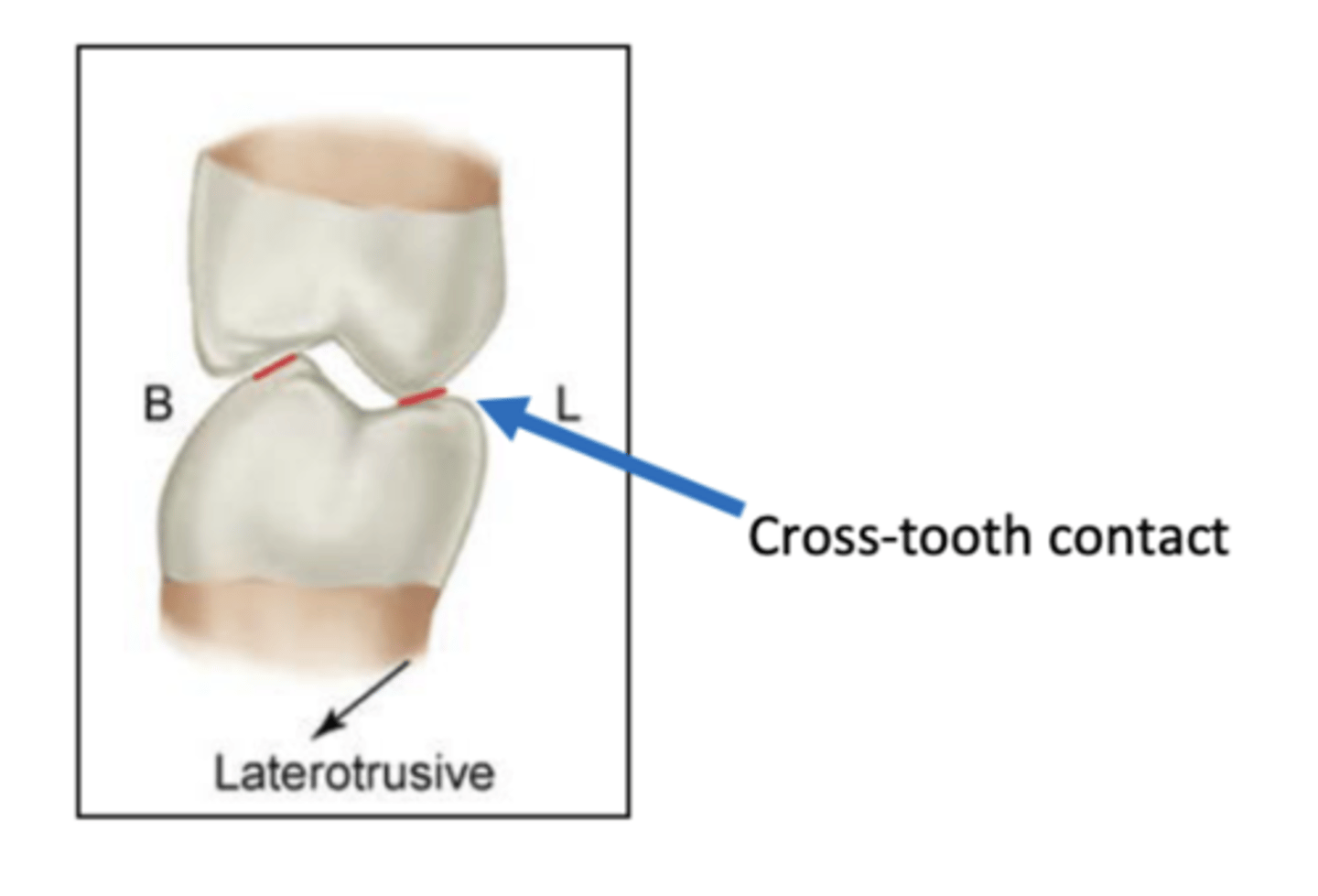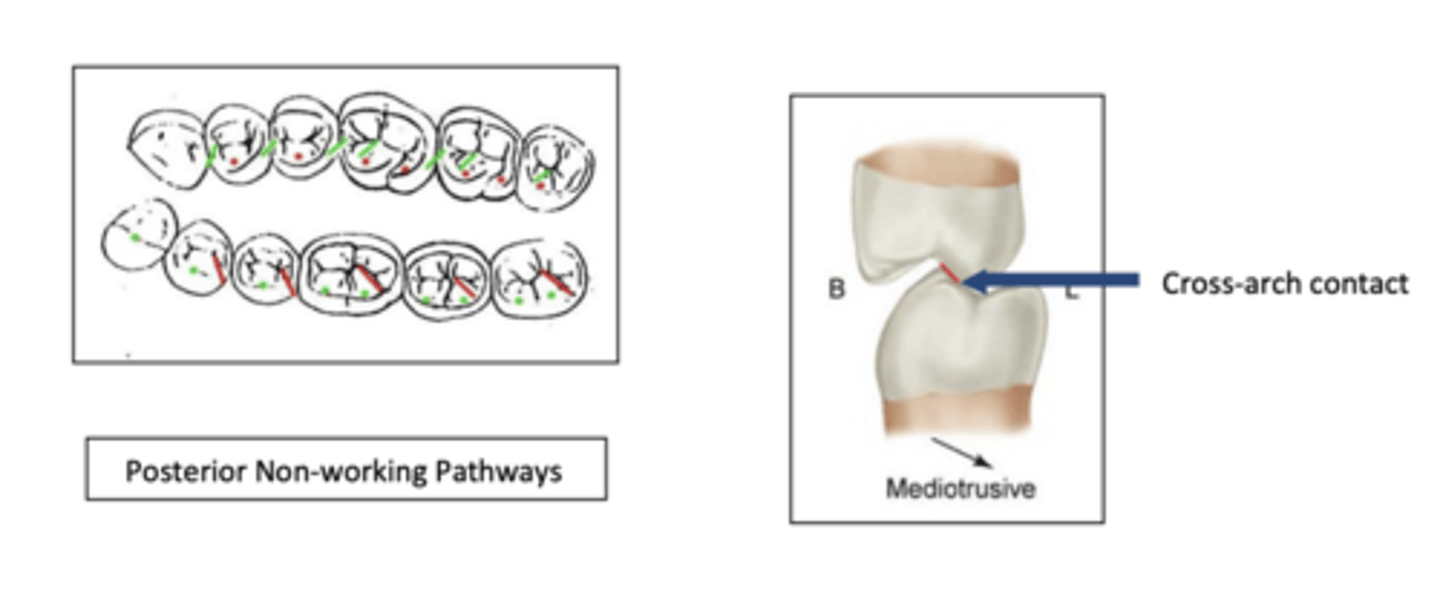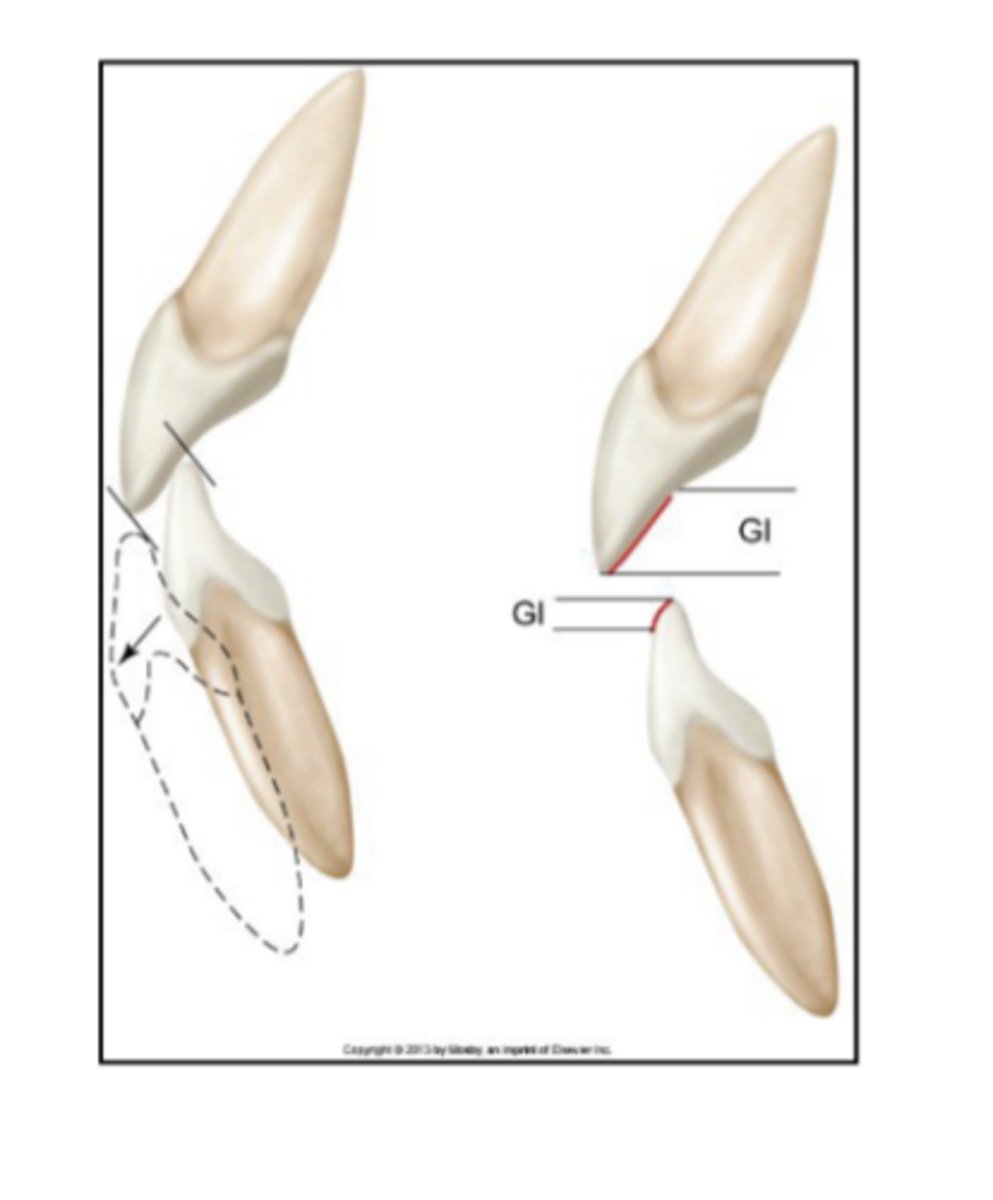DA eccentric movements
1/32
There's no tags or description
Looks like no tags are added yet.
Name | Mastery | Learn | Test | Matching | Spaced |
|---|
No study sessions yet.
33 Terms
In right laterotrusive movements, which anterior teeth contact?
6 and 27
Describe the condyle in laterotrusive movement
rotating on the working side
In posterior teeth, the protrusive movement causes the ____ teeth to pass ___ across the occlusal surfaces of _ teeth
mandibular centric cusps (buccal), anteriorly
the protusive contacts occur between the maxillary __ cusps and the ? of opposing ?
can also occur between mandibular __ cusps and ? of the ?
lingual cusps and mesial inclines of opposing fossae and marginal ridge
buccal cusps and distal inclines of opposing fossae and marginal edges
In mediotrusive movement, what cusps contact?
inner inclines of centric
The right condyle is involved in a ___ movement during left lateral movement
translational
Posterior teeth do not contact in laterotrusive movement because of
canine guidance
In protrusive movement when the anterior teeth do not contact (overbite), the ___ __ of mandibular teeth contact the ___ _ of maxillary teeth
mesial inclines , lingual cusps
what are the three anatomical planes of movement
sagittal, frontal, horizontal
What is the MIP (maximum intercuspal position)?
starting point of any eccentric movement
What are the three basic eccentric movements?
laterotrusive (right or left), protrusive (forward), recursive (backwards)
What is this called:
each posterior centric cusp creates a pathway on the opposing occlusal surface when the mandible moves away from MIP
vector pathways
Each lower anterior ____ also creates a pathway on the upper opposing ____ when the mandible moves away from the MIP
incisal edge
lingual surface
What happens to the condyles during retrusive movement?
both condyles are translating together
posterior movement
working side:
nonworking sodes
laterotrusive: side that moves away from midline
medioretrusive: side that moves toward midline
What happens to the condyle during lateral movement?
asymmetrical forward left or right movement
only one condyle is translating while the other is rotating in a stationary position
What is the working side during lateral movement called? what happens? what side is it?
laterotrusive
side of mandible that moves away from midline of body
condyle rotates in stationary position
What is the non-working side during lateral movement called? what happens? what side is it?
mediotrusive
side of mandible that moves towards the midline of the body
condyle moves downward, forward, and medially on articular eminence
Where are posterior protrusive contacts?
mandibular centric cusps (buccal) pass anteriorly across the occlusal surfaces of the maxillary teeth
between the distal inclines of maxillary lingual cusps and mesial inclines of opposing fossa and marginal ridges
between mesial inclines of mandibular buccal cusps and distal inclines of opposing fossa and marginal edges

Are protrusive contacts on the posterior teeth desirable?
no
should adjust restoration with handpiece to eliminate contacts
What are posterior working contacts during a left lateral movement? (laterotrusive)
between inner inclines of maxillary buccal cusps and the outer inclines of mandibular buccal cusps
between outer inclines of the maxillary lingual cusps and the inner inclines of mandibular lingual cusps

What is cross tooth?
outer incline of upper lingual cusp to inner incline of lower lingual cusp
not desirable
second most destructive posterior tooth contact

What are posterior non-working contacts (mediotrusive)?
occur on inner inclines of max lingual cusps and inner inclines of mand buccal cusps
cross arch contact
not desirable -- most destructive posterior contact

What is the most destructive posterior contact?
non-working cross arch contacts
mediotrusive contacts
What is the second most destructive posterior contact?
working cross tooth contacts
laterotrusive contacts
What are anterior protrusive and contacts?
normal occlusal relationship
between the incisal and labial edges of the mand incisors against the lingual fossa areas and incisal edges of max incisors
guiding inclines of incisor teeth
incisal guidance

What is the normal protrusive contact?
anterior only
What are anterior laterotrusive movements?
two types
max and mand canines come into contact during lateral movements and therefore have laterotrusive contacts (between labial surfaces and incisal edges of the mand canines and the lingual fossa and incisal edges of the max canines
Canine guidance: only the canines come into contact during working movement
group guidance: canines and max and mand premolars and or molars contact

What is incisal guidance?
contact between max and mand incisal teeth during protrusion
What is canine guidance? Group guidance?
contact between max and mand canine teeth during laterotrusive movements
labial surface and incisal edges of man canine and lingual fossae and incisal edges of max canine
canines and max/man premolars/molars (specific to UPPER GUIDING AND LOWER CENTRIC)
What is anterior guidance?
incisal and canine guidance together
what can also happen during protrusive movements with the canines?
max and mand canines can contact but is at beginning and is short in duration
what can also happen during laterotrusion movements with the incisor teeth?
incisor teeth in contact
short contact duration at end of movement